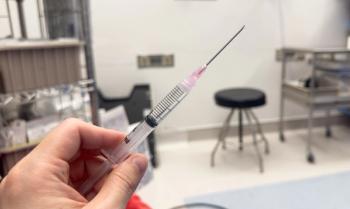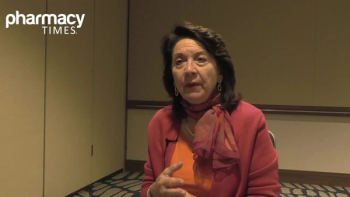
Case Report: Rivastigmine Overexposure Toxicities with Weight Loss

With gastrointestinal-based adverse effectss for rivastigmine and other cholinesterase inhibitors, a weight of <50 and <55 kg respectively leads to an increased risk for toxicities.
Background
Rivastigmine (Exelon; Novartis) is a reversible cholinesterase inhibitor (CI)which allows a larger amount of acetylcholine to build up within the synapse. The medication, which is approved for use in Alzheimer disease and dementia, aims to increase cognitive function by increasing the speed of nerve impulses. Although this increase is focused within the central nervous system (CNS), it can also gather in the gastrointestinal (GI) tract and activate the peripheral nervous system (PNS), causing adverse effects (AEs) such as nausea, vomiting, and diarrhea.1 With oral rivastigmine, these AEs are uncommon and even rarer with the rivastigmine transdermal patch.2
With GI-based AEs for rivastigmine and other CIs, a weight of <50 and <55 kg respectively leads to an increased risk for toxicities.3,4 It is also well established that CIs have a class effect of weight loss in their target populations.5
Case Presentation
EK, an 83-year-old female, presents to the internal medicine clinic in October with GI issues including fatigue, nausea, vomiting, and loose stools. The patients’ family expressed concerns regarding recent weight loss and how the symptoms have been impacting her quality of life. EK has a past medical history of non-ST-elevated myocardial infarction/ST-elevated myocardial infarction (STEMI), late-onset Alzheimer dementia without behavioral disturbance, and irritable bowel syndrome. In February, the patient was admitted into the ED for a STEMI and had been progressively losing weight since then, with the weight diminishing from 110 to 115 lbs. to 101 lbs. During this time, the patient was taking rivastigmine and memantine, which are both known for causing GI disturbances.
Treatment and Follow-Up
The patient’s weight had dipped below the assigned threshold for GI toxicity of 50 kg. With this information in mind, it was determined that holding the rivastigmine was the best course action. After holding the rivastigmine and meeting with a dietician, the patient’s GI symptoms greatly reduced in a week’s time, and she gained 3.5 lbs. Over the next 6 months, the patient’s weight improved and the rivastigmine 4.6 mg patch was reinitiated without any GI issues, and after further weight gain, she was back up to the original dosage of the rivastigmine.
Discussion
Clinicians should be aware of patient weight loss or gain when on CI’s and how this may influence any adverse effects. Current research states that patients with a low body weight can have overexposure to rivastigmine, causing an increase in AEs.6 Our findings support this and further suggest that significant weight loss can lead a patient to experience similar outcomes.
Conclusion
The result of this case suggests a possible need for dosage adjustments due to fluctuations in body weight. With the currently available research only including patients with static weights, we were unable to see findings suggesting overexposure risk after a maintenance dose has already been established.
About the Author
Cameron Hammers is a PharmD candidate in the University of Mississippi class of 2025 and a 2023 Mayo Clinic Summer Intern.
Linda Huang, PharmD, BCPS, BCACP, is preceptor.
References
1. Gauthier S. Cholinergic adverse effects of cholinesterase inhibitors in Alzheimer's disease: epidemiology and management. Drugs Aging. 2001;18(11):853-62. doi:10.2165/00002512-200118110-00006
2. Winblad B, Grossberg G, Frölich L, et al. IDEAL: a 6-month, double-blind, placebo-controlled study of the first skin patch for Alzheimer disease. Neurology. 2007b;69(4 Suppl 1):S14-22.
3. Aricept [Package Insert]. Woodcliff Lake, NJ: Eisai, 2012.
4. Exelon Patch [package insert]. East Hanover, NJ: Novartis; 2018.
5. Soysal P, Isik AT, Stubbs B, et al. Acetylcholinesterase inhibitors are associated with weight loss in older people with dementia: a systematic review and meta-analysis. J Neurol Neurosurg Psychiatry. 2016;87(12):1368-1374. doi:10.1136/jnnp-2016-313660
6. Lee J-H, Sevigny J. Effects of body weight on tolerability of Rivastigmine Transdermal Patch. Alzheimer Disease & Associated Disorders. 2011;25(1):58–62. doi:10.1097/wad.0b013e3181f3282
Newsletter
Stay informed on drug updates, treatment guidelines, and pharmacy practice trends—subscribe to Pharmacy Times for weekly clinical insights.


















































































































































































































